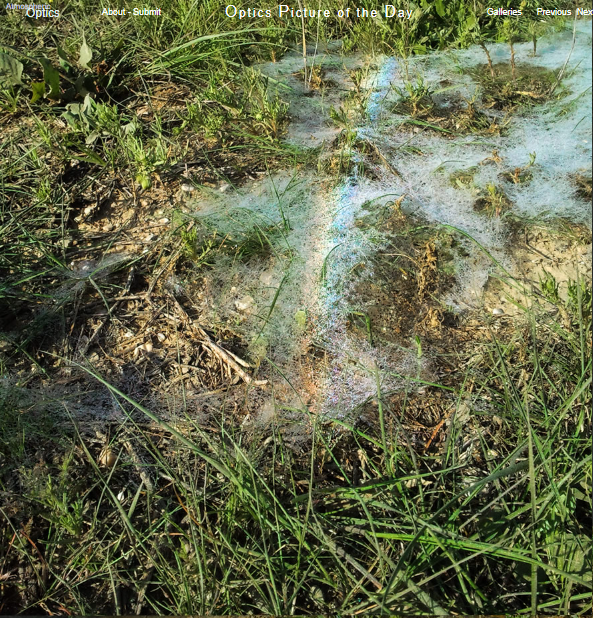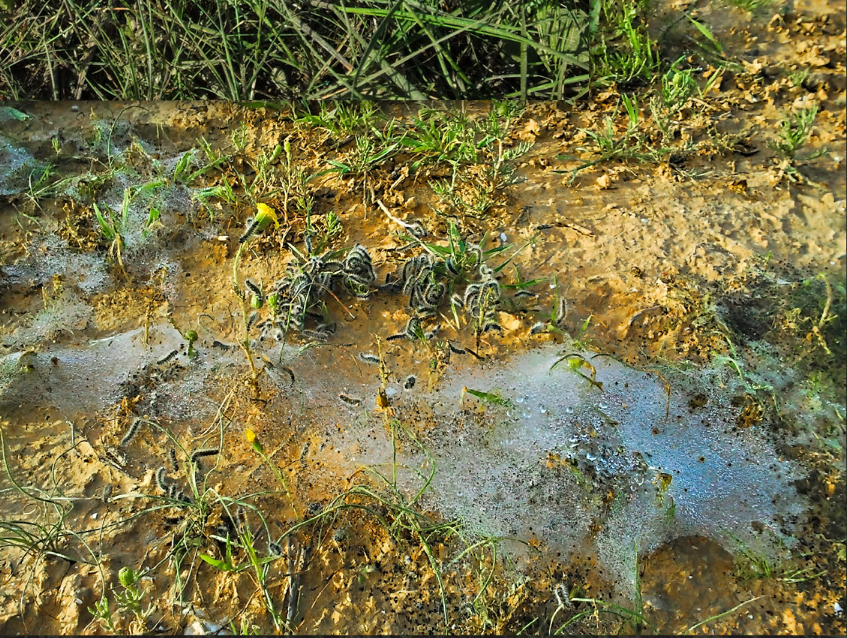Caterpillar tents dewbow - OPOD
Caterpillar Tents Dewbow: A Natural Phenomenon in the World of Atmospheric Optics
Have you ever come across a captivating bow formed by drops of dew on delicate structures resembling tents? These enchanting formations, known as caterpillar tents dewbows, are a unique spectacle found in nature. While rainbows in the sky are well-known, dewbows on caterpillar tents offer a different visual experience, characterized by their broader shape and pastel hues. In this article, we will delve into the fascinating world of caterpillar tents dewbows, exploring their formation, significance, and the science behind their captivating appearance.
Caterpillar tents dewbows are most commonly observed in areas where woolly bear caterpillars, scientifically known as Ocnogyna loewii, reside. These caterpillars construct tent-like structures on the ground, which serve as their shelter from predators during the day and protect them from the dew at night. As these caterpillars consume the vegetation beneath their tents, they move on to create new ones, constantly adapting to their environment.
While woolly bear caterpillars are not poisonous, it is advisable to refrain from touching them. Their tiny hairs can cause irritation to the eyes and throat. Thus, it is best to appreciate these natural wonders from a safe distance.
The formation of dewbows on caterpillar tents is closely linked to the optical properties of light and the physical characteristics of water droplets. Unlike rainbows, which are created by sunlight interacting with raindrops in the atmosphere, dewbows occur when sunlight encounters dew drops on various surfaces, including spider webs, grass, and caterpillar tents. The light waves diffract differently as the droplets decrease in size, resulting in a broader and more pastel-hued appearance compared to traditional rainbows.
As the drops of dew on caterpillar tents become smaller, the diffraction of light waves intensifies. This phenomenon causes the colors of the dewbow to become increasingly blurred out, resulting in a softer and more ethereal visual display. Additionally, the radius of the dewbow reduces slightly as the drops decrease in size. In certain instances, when the droplets are exceptionally small, a nearly colorless fogbow may form, further adding to the mystique of atmospheric optics.
The intricate beauty of caterpillar tents dewbows has captured the attention of many photographers and nature enthusiasts. The enchanting visual display against the backdrop of the natural world provides a unique opportunity for artistic expression and appreciation. Photographers like Amir Bernat, who captured a mesmerizing image of a caterpillar tents dewbow near Ofakim, Israel, have showcased the captivating allure of this phenomenon.
In conclusion, caterpillar tents dewbows are a remarkable example of the wonders found in the realm of atmospheric optics. These awe-inspiring formations, created by drops of dew on delicate caterpillar tents, offer a unique visual experience characterized by their broader shape and pastel hues. By understanding the science behind their formation, we can appreciate the intricate beauty of these natural spectacles. So next time you come across a caterpillar tent adorned with dewdrops, take a moment to marvel at the captivating dewbow it may create, reminding us of the astonishing wonders that exist in our natural world.

Caterpillar Tents Dewbow
Imaged near Ofakim, Israel by Amir Bernat, Ilan Ramon youth physics center.
The bow is produced by drops of dew on the 'tents' constructed by woolly bear caterpillars, Ocnogyna loewii.
"The caterpillars live together on the ground using the tent as protection from predators during the day and from the dew at night.
Once they consume the flora under the tent they just move on to create another one.
Whilst they are not poisonous, it is recommended not to touch them as their hairs can irritate the eyes and throat."
Bows from dew drops on spider webs, grass (and woolly bear tents) are usually (but not always) somewhat broader and more pastel hued than rainbows in the sky. Light waves are diffracted more and more as drops get smaller. The colours are increasingly blurred out and the bow radius reduces a little.
Very small drops give the almost colourless fogbow.
©Amir Bernat shown with permission

Note: this article has been automatically converted from the old site and may not appear as intended. You can find the original article here.
Reference Atmospheric Optics
If you use any of the definitions, information, or data presented on Atmospheric Optics, please copy the link or reference below to properly credit us as the reference source. Thank you!
-
<a href="https://atoptics.co.uk/blog/caterpillar-tents-dewbow-opod/">Caterpillar tents dewbow - OPOD</a>
-
"Caterpillar tents dewbow - OPOD". Atmospheric Optics. Accessed on November 26, 2024. https://atoptics.co.uk/blog/caterpillar-tents-dewbow-opod/.
-
"Caterpillar tents dewbow - OPOD". Atmospheric Optics, https://atoptics.co.uk/blog/caterpillar-tents-dewbow-opod/. Accessed 26 November, 2024
-
Caterpillar tents dewbow - OPOD. Atmospheric Optics. Retrieved from https://atoptics.co.uk/blog/caterpillar-tents-dewbow-opod/.